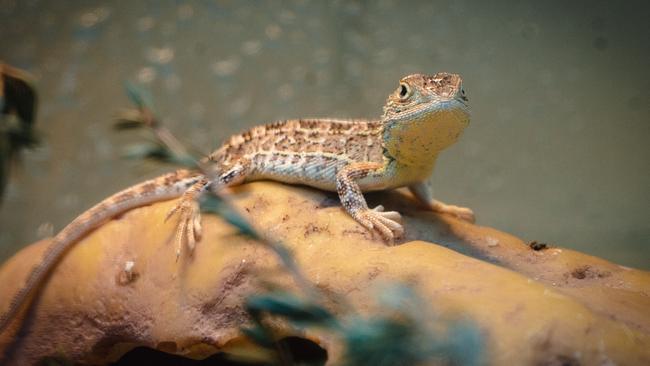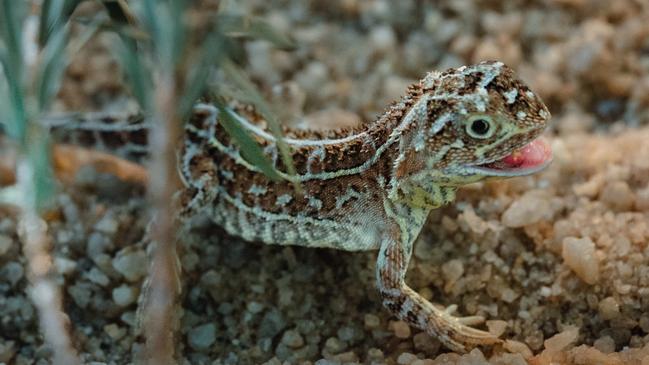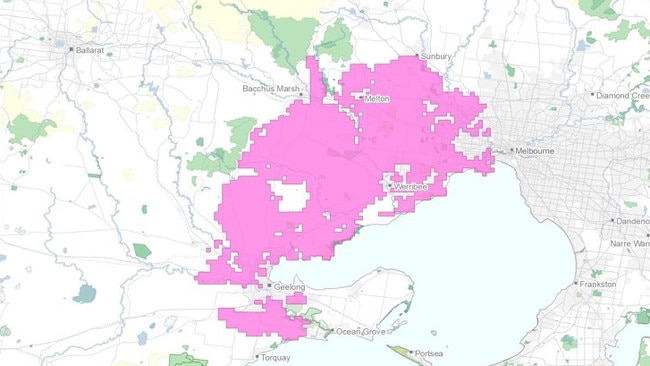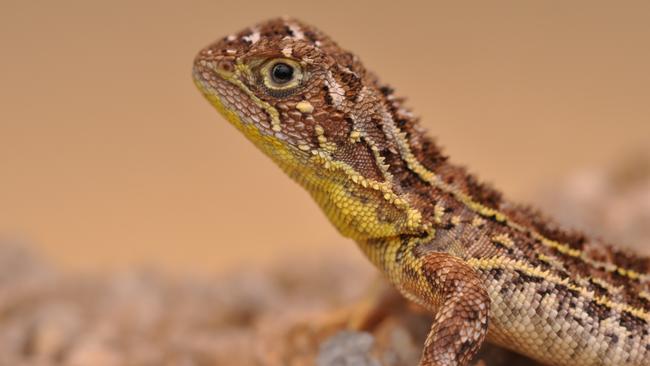Endangered Victorian Grassland Earless Dragon stalls housing in Bacchus Marsh
A tiny, endangered earless dragon has stalled development of tens of thousands of homes in Melbourne’s west. And the little lizard’s habitat could extend past Geelong.

Victoria
Don't miss out on the headlines from Victoria. Followed categories will be added to My News.
A tiny critically endangered lizard has stalled the construction of tens of thousands of homes in Melbourne’s west, which property developers say is costing them more than $1m to investigate.
The rediscovery of the Victorian grassland earless dragon — previously believed extinct and which last year was hailed by Melbourne Zoo as a discovery akin to the Tasmanian tiger — has prompted a joint investigation by the federal and state government to help conserve the species’ habitat.
But the lengthy process has paused a series of major developments in the Bacchus Marsh region which are set to increase housing supply and provide thousands of new jobs.
Industry sources have told the Herald Sun they fear the wait could be as long as 12 months.
Australian government mapping estimates the rare reptile’s habitat could stretch from the Bellarine Peninsula all the way to Sunbury on Melbourne’s outer fringe.
This includes the Northern Geelong Growth Area where the Lovely Banks Development Group is set to build about 15,000 homes.

Newland Developers Victorian general manager, Mark Whinfield, whose team is managing the Lovely Banks project, said the conservational assessment was “certainly going to hold things up”.
“We’re expecting the development to be delayed by up to 12 months,” he said.
Mr Whinfield said the costly investigation would cause hip-pocket pain for consumers.
“We’re spending more than $1m on the investigation into the dragon,” he said.
“That cost will have to be passed on to consumers.”
Mr Whinfield noted that modelling indicated the discovery could potentially impact up to 310,000 homes.
Among other proposed housing estates impacted is the Merrimu Precinct, expected to deliver homes for 20,000 residents.
The Parwan Precinct, set to house 13,000 new residents with the potential for a new train station, has also been paused.
According to precinct structure plans, the population of Bacchus Marsh is projected to double over the next two decades to about 40,000 residents.

The Victorian Planning Authority last year flagged that the projects would be paused “until the conservation requirements for the species have been confirmed”.
It comes as the Allan government attempts to build 80,000 homes a year over the next decade.
Environment Minister Steve Dimopoulos said there was a fundamental need to both create new houses and protect endangered species.
“We can do both and we have to do both,” he said.
“What we’re doing, in getting ahead of the game, is working with the Commonwealth on a national recovery plan for the Grassland Earless Dragon and trying to find a pathway to preserve and grow the species.”
Mr Dimopoulos said he didn’t believe the lizard’s discovery would lead to delays in developing the land.

Property Council Australia’s Victorian boss Cath Evans said while industry supported conservation efforts, delays were “inflicting significant holding costs” on developers.
“With the pipeline of new residential dwellings, a priority to meet Housing Statement targets and further effort required to unlock land for future industrial uses, delays must be minimised and conservation efforts fast tracked,” she said.
But fauna specialist Manfred Zabinskas, who is employed by developers to factor the impact projects have on animals, said: “Being so special and threatened we have to go to every length imaginable to save them. We only get one chance.”
Animal Justice Party MP Georgie Purcell said: “The government must not cower to pressure from powerful developers and should take the same approach when it comes to kangaroos and koalas who are routinely decimated by developers”.
A federal government spokesman said a recovery plan created in collaboration with the Victorian government was under way, with $673,000 invested in the lizard’s conservation.
“The draft recovery plan was released for a three-month public comment period in July 2023 and is expected to be finalised in 2024,” they said.
A Victorian government spokeswoman said a small number of earless dragons had been found since the discovery.
She said the assessment of its population distribution was ongoing.
“DEECA is working with the Victorian Planning Authority and the Australian Government to guide planning decisions and support species recovery,” she said.




